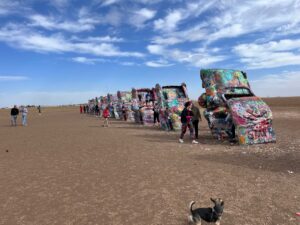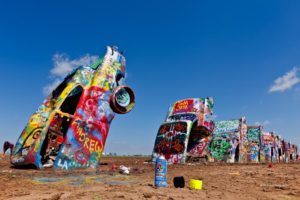
It took me some time to get my arms around it, but it finally happened.
Amarillo officials want the Texas Commission on the Arts to designate a portion of the city as an arts and culture district.
It won’t happen overnight. It might take a year or even longer for the arts folks in Austin to make that designation. From what I’ve been able to learn about it, the district’s creation will contribute to the city’s evolution into what some groups and leaders believe could turn the city into an arts destination.
I met recently with my good friend Beth Duke, the executive director of Center City, which is spearheading this effort. Duke knows the city inside and out, up and down, in and out. You name it, she knows it. She’s lived here all her life and for 30 years she covered the city in several capacities as a reporter and editor for the Amarillo Globe-News.
She transitioned years ago into her new role as an effective and articulate spokesman/advocate for her hometown.
Duke told me she has heard over many years how surprised visitors to Amarillo are when they learn about the art that is offered here.
She talked about all the performing arts: symphony, opera, theater, Broadway play series. She talked also about the visual arts: museums, art galleries and outdoor art exhibits such as, say, Cadillac Ranch.
The Cadillacs? I know what you’re thinking. The exhibit just west of the city is little more than a conversation piece. But take a look on a sunny day at the number of vehicles parked on the access road next to The Ranch. Duke thinks the Cadillacs can become a major draw for visitors.
The district encompasses a good chunk of downtown Amarillo, Sixth Avenue, Wolflin and the San Jacinto neighborhood.
What does it mean for the city in tangible terms?
It means the city could apply for grants to promote certain exhibits or performances that come to town.
In the longer term, though, it means, according to Duke, that visitors who come here might be enticed into staying an extra day or two once they discover what they can enjoy. They might want to tour the Panhandle-Plains Historical Museum in Canyon, on the West Texas A&M University campus. They might discover Palo Duro Canyon just a bit east of there and south of Amarillo. They might want to tour the Amarillo Museum of Art, or take a gander at the galleries that occupy what used to be a significant shopping mall at the Sunset Center.
It’s impossible, it appears, to put a precise dollar amount on the impact such a designation would have on Amarillo. I happen to believe the impact could be significant.
It is important to note, though, that Amarillo isn’t exactly blazing a trail in this regard. The state already has established 26 such districts — including one in Lubbock, which has its share of events annually that bring significant tourist revenue to that city.
OK, so we’re not the first to climb onto the arts and culture district bandwagon.
The way I figure it, though, there’s still plenty of room aboard it.







